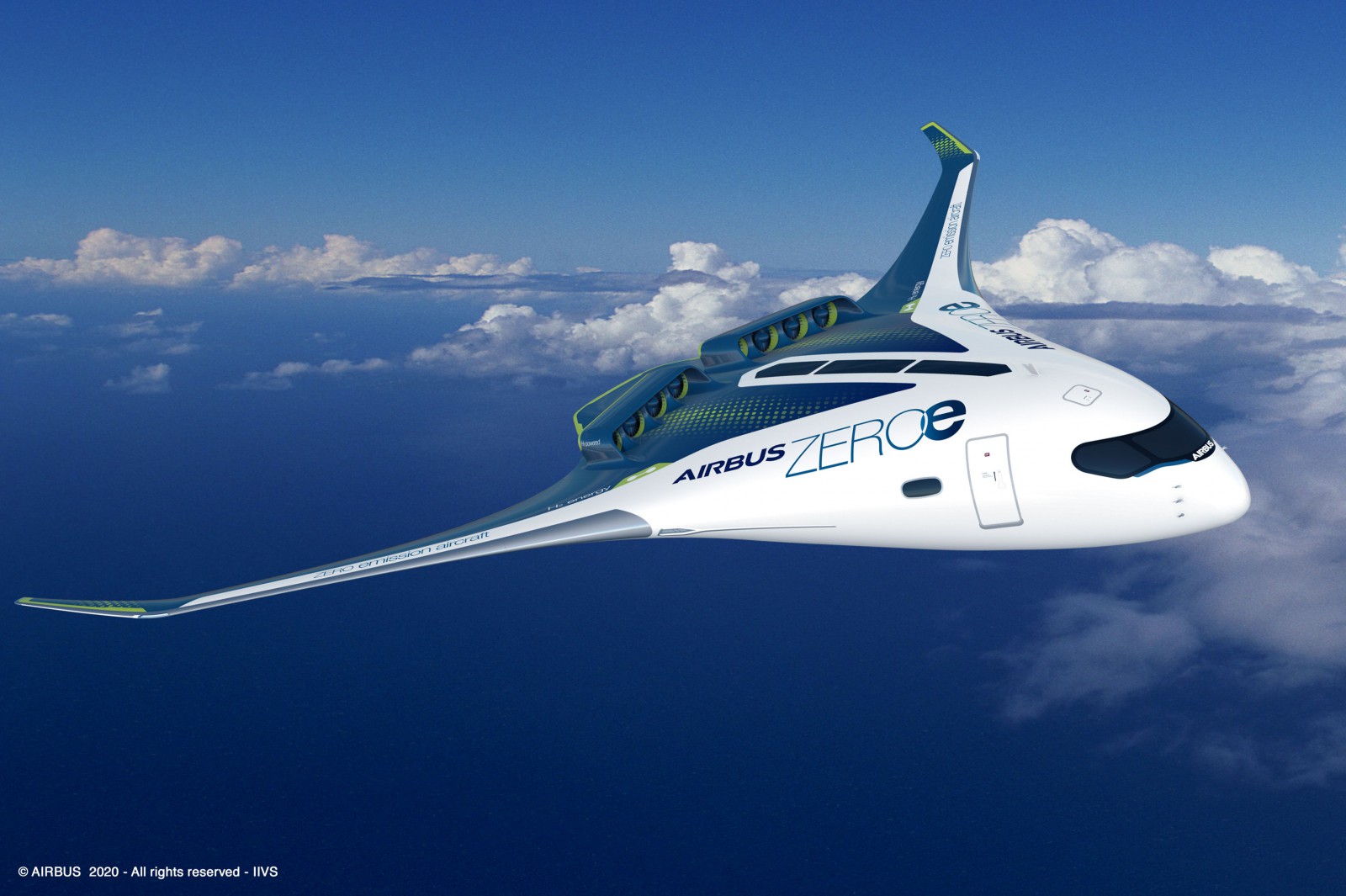Advanced airframe and engine design, increased availability of sustainable aviation fue, and the use of hydrogen are among the strategies being followed by major aersopace companies to reach the industry’s tough net-zero carbon by 2050 target.
The chief technology officers of seven major aerospace companies this week called on policymakers, research institutions, fuel producers and airport operators to build on progress in recent years to make the aviation industry more sustainable.
The CTOs of Airbus, Boeing, Dassault Aviation, GE Aviation, Pratt & Whitney, Rolls-Royce, and Safran made the call after a meeting in London ahead of the COP26 climate conference.
READ: Blue Origin’s ambitious plan to build a commercial space station
The prelude to COP 26 has seen a flurry of commitments to the net-zero 2050 carbon goal, including by the International Air Transport Association at its recent annual meeting.
Although the intent is there, there is recognition the journey will not be easy.
The aerospace CTOs noted in a joint statement that flying today used 80 percent less fuel per revenue passenger kilometre (RPK) than it did fifty years ago.
While aviation accounted for 2.5 percent of all man-made CO2 emissions, they said, it generated 4 percent of global GDP and supported 88 million jobs.
The three core aviation technology areas being pursued by the aerospace companies will see them focus on advancing the aircraft and engine design and technology as well as supporting increased availability and adoption of Sustainable Aviation Fuel (SAF) and investigating hydrogen as a fuel of the future.
They will also continue to develop novel technologies such as electric propulsion aimed at eventually enabling net-zero carbon aviation while maintaining industry safety and quality standards.

The aerospace CTOs revealed their firms had spent more than $US75 billion in research and development over the past five years but called for more support from policymakers and other institutions.
At the top of the agenda was a sustained and planned approach from policymakers to support the development of novel technologies and stimulate the ramp-up of SAF and green hydrogen production capacity.
The CTOs called for a globally consistent approach to regulation and certification standards, more collaboration on developing new technologies between researchers and industry as well as investment in SAF production by fuel producers.
Airport operators also needed to invest in the infrastructure needed to support new aviation technologies, they said.
A summary of action taken by the aerospace companies since 2019 delivered an overview of where the industry stands today. Here’s what it revealed:
- Airbus announced its ambition to deliver the world’s first zero-emission aircraft by 2035, unveiling three hydrogen-powered concept aircraft that highlight the company’s commitment to developing this high-potential technology for commercial aviation. Airbus is also engaged in 100 percent SAF climate-impact projects that are a part of its overall roadmap towards certification for the entry-into-service of 100 percent SAF on its fleet by 2030.
- Boeing has pledged that its commercial aircraft will be capable of flying on 100 percent SAF by 2030. It continues to test new technologies on its ecoDemonstrator program and announced a partnership with SkyNRG and SkyNRG Americas to scale up SAF. Boeing and Kitty Hawk also formed Wisk, a joint venture to advance the future of urban air mobility with more than 1,500 test flights of its self-flying, all-electric air taxi. The US company completed a fifth hydrogen flight test program; this time with subsidiary Insitu on their ScanEagle3 unmanned aerial vehicle which was powered by a proton exchange membrane (PEM) hydrogen fuel cell.
- Dassault Aviation actively promotes the use of SAF and its Falcon range is already SAF-compatible. Within Clean Sky 2 at the European level and France’s civil aviation research council (Corac), Dassault is focusing on lowering fuel consumption by reducing aircraft drag and weight. With the European Sesar program, Dassault works to improve flight efficiency and fuel consumption through the use of specially-tailored flight paths. It is also involved in Corac projects related to the use of hydrogen in future aircraft.
- GE Aviation is maturing a megawatt-class integrated hybrid electric powertrain to demonstrate flight readiness for single-aisle aircraft with NASA, and is leading industry efforts to define standards for 100 percent SAF.
- GE and Safran jointly launched the CFM RISE (Revolutionary Innovation for Sustainable Engines) program in June 2021 to demonstrate and mature disruptive technologies including open fan and hybrid electric targeting more than 20 percent lower fuel consumption and CO2 emissions compared to today’s most efficient engines. Program goals include ensuring 100% compatibility with SAF and hydrogen.
- Pratt & Whitney announced a major new investment towards developing a hybrid-electric flight demonstrator in partnership with De Havilland Canada, Collins Aerospace, and the Canadian government The project targets a 30 percent improvement in fuel efficiency and CO2 emissions compared to current regional turboprop aircraft. P&W is also developing technologies for a more efficient engine core and recently opened a new engineering and development facility in Carlsbad, California, dedicated to ceramic matrix composites (CMC) to support this effort. It is continuing to validate engines operating with up to 100 percent SAF.
- Rolls-Royce has joined the UN Race to Zero and has pledged to prove all its Trent engines – accounting for 40 percent of the world’s long-haul fleet – are compatible with 100 percent sustainable aviation fuel (SAF) by 2023. It has tied its SAF compatibility goals to executive remuneration and has tested two widebody and one business jet engine types on 100 percent SAF, Rolls_Royce also signed an MoU with Shell agreeing to develop and accelerate the use of SAF. It has developed and flown what it expects to be the world’s fastest all-electric aircraft and signed agreements in the all-electric and urban air mobility markets with customers to power products due to fly by the middle of this decade.
- Safran has created a strategic partnership with TotalEnergies to accelerate the reduction of industry CO2 emissions by jointly working for the development and deployment of SAF to completely replace fossil fuels in engines. Safran and Airbus will leverage the skills and test facilities of their JV ArianeGroup to prepare hydrogen technologies for aviation.
























